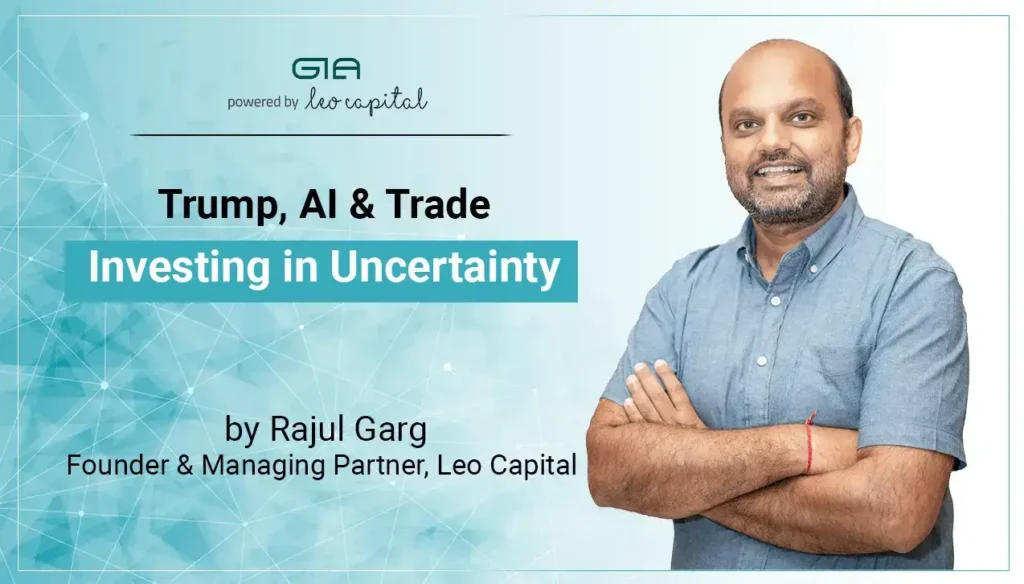In the venture world, one of the most important questions while investing is “Why Now?”. Efficient market theory would determine that if there is an opportunity to solve a problem, and it is solvable, then it should have been solved by now.
Policy changes and technological advancements change this solvable problem set and create opportunities for entrepreneurs
One example of this is UPI in India. As UPI infrastructure became available, and then combined with a policy change – demonetisation, ushered in an explosive growth in digital payments. VCs and entrepreneurs capitalised on this opportunity, and significant new value has been created.
The current macro environment is already pregnant with significant change because of the rapid progression of AI. With the policy changes being ushered in by Trump, the pace of change is unprecedented, thereby tearing up the global entrepreneurial fabric and opening up all sorts of opportunities. Given the rapid pace of change, only a strong-hearted person can predict which way the puck is going, but some areas that are becoming a little more evident are below:
Crypto/Stablecoins as a payment mechanism:
As trade becomes more and more expensive, there is significant pressure to diversify one’s trade base. Exporters are looking for new markets, and importers are looking for new vendors. International payments historically have continued to be expensive and unreliable. With fresh duties now coming in on remittances as well, there is likely to be a greater turn towards crypto-based payments. We are seeing this across our current portfolio and new opportunities. Global payments and money movement is a massive space and is likely to have new winners in the current regime.
Crypto/Gold as safe haven/treasury:
The currency movements in the current regime seem to be unpredictable. It feels like there is no safe space. In Spite of the grand narrative of trade deficit reduction, the US trade deficit seems to continue to balloon, and investors will likely seek diversification in alt instruments. This should bring back greater focus on both Gold and Alts, thereby enabling new infra, enablers and yield instruments. These had seen the sunlight last in 2021/22, but seem to be creeping out of the shadows rapidly.
Robotics/Industrial Automation:
There is a clear movement to try and manufacture more in the US. This, combined with a hawk-like immigration strategy, is likely to require greater automation. A labour-driven factory is just not going to be viable in the US. On the other hand, AI advancements are rapidly progressing in Robotics and Industrial Automation. I would expect significant new opportunities in these areas. These are large areas, too, with opportunities across the board. Whether it’s residential help, cooking automation in restaurants, or large-scale manufacturing automation, there should be opportunities everywhere.
New manufacturing dynamics:
Given the ever-changing tariff structure, it may make certain locations more favourable to set up manufacturing in terms of fully landed cost of goods, versus others. Companies that can identify these and become a part of the supply chain can benefit from these changes.
There is a lot of focus on domestic jobs in the US, and tariffs are meant to enable that. A high employment rate will make labour more expensive, automation more attractive, and consumption even more prominent. Hence, the consumption economy should benefit over the next year or so. From groceries to clothing, there should be a greater demand.
New travel destinations:
Given the changing affiliations between countries, people are likely to travel to different destinations than earlier. For example, Europeans may go less to the US and more to other destinations like Asia. This may throw up opportunities for other regions to develop as tourist destinations.
While thematically several opportunities may come up, there are also roadblocks. Some of these are:
Restrictions in travel:
Indian entrepreneurs have historically travelled to the US on different visas, and hence, the tech ecosystems have largely been in sync. With a crackdown on travel in general and even H-1Bs, F-1s, etc, the movement of people may be reduced. This may increase the gap in the understanding of the global ecosystem, reducing the opportunity for Indian entrepreneurs to build global businesses.
Greater protectionism:
With countries turning inwards, the cost of doing cross-border business may increase, in some cases making it unviable. The need for local partners, which has been largely absent in the US market for decades, may creep up again, reducing control and margins.
The pace of change itself may make business decision making difficult:
On on-again, off-again nature of changes may make certain investments obsolete quickly. Businesses favour a stable policy environment so that they can build around that. That has not been available in the recent past.
The world is definitely at a precarious point. We have multiple wars in different parts of the world, and there is significant technological advancement centered around the US and China. This provides for a challenging and uncertain situation. However, looking back at prior world events, they have always fostered innovation, since innovation becomes a way of surviving vs thriving. We may see an innovation multiplication yet again.
Read more: Trump’s Tariff War: Opportunities And Roadblocks For Indian VCs And Startup

